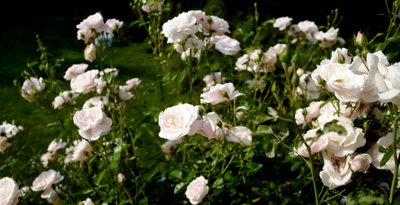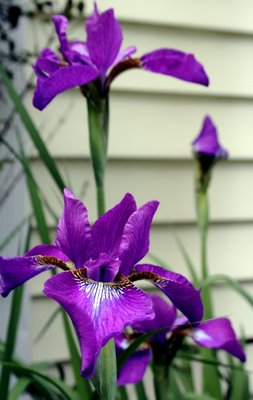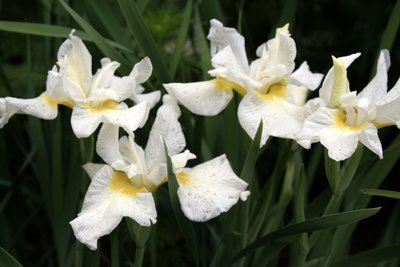These plants have an open, pleasantly messy habit with numerous branches and delicate pinate leaves. One variety of larkspur produces deep blue flowers.

The other type blooms pink--just the same shade as the "New Dawn" roses.

What with all this liberal self-sowing, the only challenge is to direct the plants' efforts towards the desired plot of ground. When the seed pods have dried and begun to open, I collect as many seeds as possible. These are stored in the refrigerator until Thanksgiving Day. Half of the seeds are sown directly then and the remainder in early spring. They inevitably crowd themselves and, by late June, only the strong--or well placed--survive. Next year, I am looking forward to recapturing the space so gracelessly taken up by my (big) mistake.
My recollection may not be accurate, but I think that Cora Leich died about thirty years ago.












